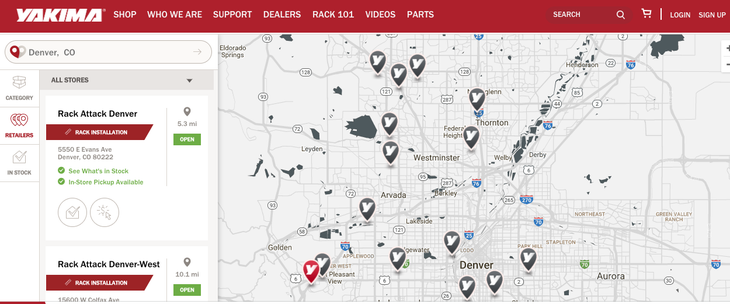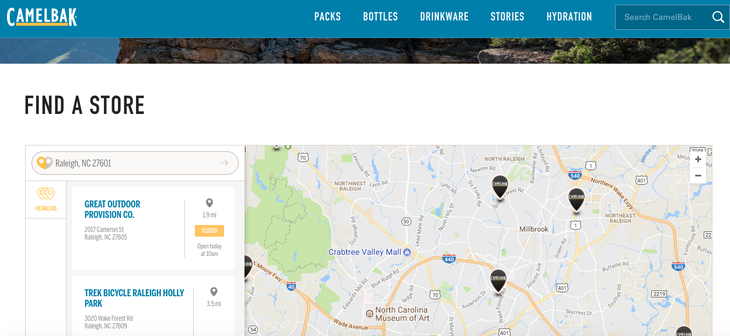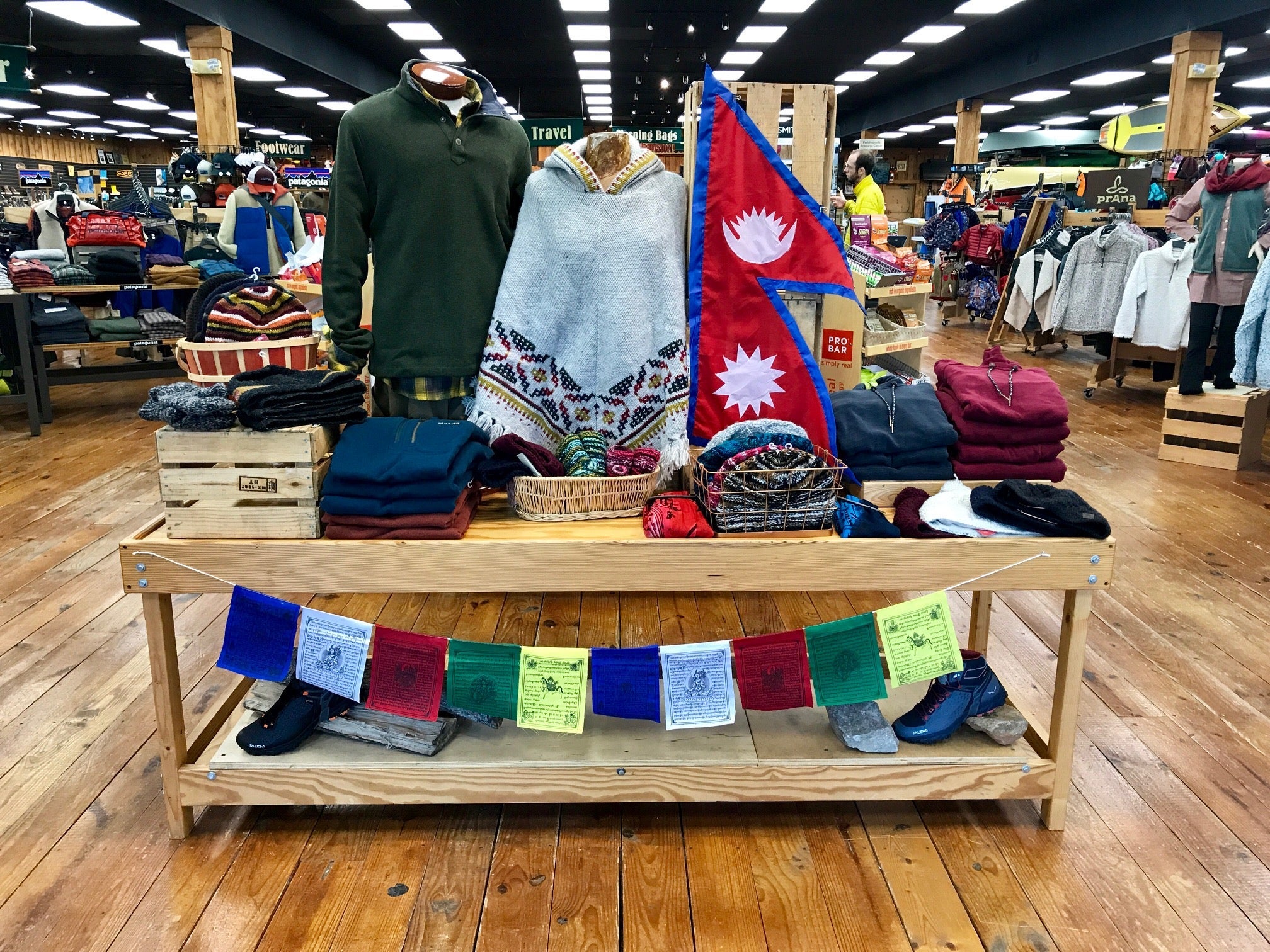Everyone in this industry knows the problem by now: the rise of online shopping has turned the traditional outdoor marketplace on its head. Consumers now turn to the internet first when they need new gear; brands seize the chance to sell it directly through their own websites or on Amazon; brick-and-mortar retailers are left scrambling. Less obvious? The solutions. OBJ has partnered with Mike Massey, founder of the online marketing platform Locally (which makes it easier for brands to refer buyers to nearby retailers for the sale), to examine how brands and specialty retailers can work together to everyone’s benefit. In this series, The Outdoor Retailer Playbook, we’ll examine several key principles for making the brand-retailer relationship even stronger in this brave new world.
Most shoppers don’t visit a brand’s website ready to buy directly. In fact, according to Massey, Locally’s data show that up to 30 percent of online browsers end up clicking on the site’s dealer locator tool instead, while only about 1 percent buy straight from the source. The larger number “represents the people who want to try something on, or need it this weekend, or want multiple purchase options, or maybe they want to ask a question,” said Massey. In short, they want to be pointed to their neighborhood shop so they can check out the goods in person.
This represents a critical opportunity for vendors to help curious shoppers open their wallets and to boost the profiles of specialty retail partners.
So what happens when brands fumble it with inaccurate information, from misstating a store’s inventory to missing new locations to directing buyers to bungled addresses or closed shops? Not only do they risk sending a would-be buyer to a retailer that only stocks their competition, but the wrong info is sure to lead to an aggravated shopper.

And that’s bad news for everybody, said Jason McGibbon, vice president of sales at Yakima: “If consumers find themselves at a location where the product is not available, or they’re not carrying the Yakima brand, it reflects poorly on the entire ecosystem.” Goodbye, sale—and a retailer caught up in the mistaken referral won’t come out smelling great, either.
On the flip side, detailed, up-to-date shopping information can turn interested buyers into brand loyalists. “I think vendors are coming around to realize that handing off to a brick-and-mortar retailer can only enhance [a shopper’s] perception of that brand and brand equity in the local marketplace,” said Chuck Millsaps, president of Great Outdoors Provision Company, a North Carolina-based retailer with nine locations.
“It takes multiple purchases before a shopper develops an affinity for a brand,” said Massey. “The more misinformation you give when a shopper is trying to find your products, the less likely you are to develop a relationship with that customer.” Nailing that first contact, though, can turn an unfamiliar label into a shopper’s new go-to brand. Say a shopper is curious about a particular sunglasses or hiking boot brand. After checking out the vendor’s website, an accurate dealer locator tool points her to a neighborhood retailer that not only carries the brand, but has her specific styles of choice in stock. She drops in, tries on a few pairs, asks a few questions, and makes a purchase.
Success Stories
For roof rack brand Yakima, zeroing in on the trustworthiness of its website’s dealer locator tool took its online-to-offline referrals to the next level, going beyond just pointing shoppers to nearby stores.
“You can see that in your location, dealer X has the inventory in stock, and that it’s available for pickup and can be reserved for 24 hours,” noted McGibbon. “And we’re able to identify the dealers that offer installation services. That microcosm of the shopping experience becomes quite robust. If the consumer is just finding out that there’s a dealer near them, they have to take the extra step to call to see if the product is available.”
That level of specificity (provided by the Locally platform, which Yakima fully adopted in early 2016) has translated into a noticeable increase (exact stats were unavailable at press time) increase in website visitors who jump off at the product page and shop locally, rather than clicking through to the site’s shopping cart.
On the retail side, Great Outdoors Provision Company has long recognized the importance of accurate listings on vendor websites—not that pulling it off was easy.
“For a while there, we literally had someone contacting the 265 vendors we had and saying, ‘Is there some reason we’re not on your dealer locator?” said Millsaps. “We carry a unique, really curated mix of products. There are certain brands that we’re going to make sure we’re a part of [their search results].” Outsourcing that fact-checking process to Locally has made things much simpler for the small chain.
Do Better
Whether you’re a vendor or a retailer, you can probably be doing more to boost the accuracy—and therefore, effectiveness—of your online tools. Here’s how to up your O2O (online to offline) game.
>>Fight channel conflict. Why do so many vendors fall short on their O2O referrals? Often, Massey said, there’s simply no one at the company in charge of double-checking and updating dealer listings. And when there is, sometimes that task falls to the digital marketing and ecommerce department—and “ecommerce guys see brick-and-mortar as a competitor,” he noted.
Better: Designate someone (or an outside platform like Locally) to review and update retailer listings and inventory information. (Massey estimates it would take a vendor about 40 employee hours per season per 1,000 dealers to do this right on your own.) And help all employees see the value in effective retailer sales handoffs.
>>Go deeper with your store locator. A tool that correctly identifies all the stores carrying your brand? Great. But a tool that does that, plus reflects current inventory levels and lets shoppers book appointments with employees or put a hold on products? Next-level service. The Locally platform offers several options for fine-tuning your locator tool.
And don’t forget checking that your address and hours are correct on sources like Google My Business or Yelp. “Realize there are a variety of sources for maps, driving directions, hours, and things like that available to shoppers,” Massey said. “That fact should be a trigger for retailers to say, ‘I need to spend time making sure my overall online profile is up to date.’” Retailers that don’t have the time or inclination to check independently can turn to tools like Locally, Yext, or Sweet IQ.
>> Own your digital presence. Much of the responsibility for accuracy falls to vendors/brands, but retailers have a role to play, too.

“Look at these O2O referrals as a primary source of foot traffic,” Massey said. Check that your store locations are indeed appearing, and appearing correctly, on vendors’ dealer locators: “When retailers are picking up on inaccuracies, that’s tremendously helpful for the brand,” noted Jeremy Hancock, national sales manager for CamelBak. “It’s a dialogue.” (Massey estimates a medium-size store can pull this off by dedicating two staff days a month to fact-checking.)
And don’t forget checking that your address and hours are correct on sources like Google My Business or Yelp. “Realize there are a variety of sources for maps, driving directions, hours, and things like that available to shoppers,” Massey said. “That fact should be a trigger for retailers to say, ‘I need to spend time making sure my overall online profile is up to date.’”
Brands and retailers alike can have the best intentions of working together to benefit from online shopping—but those crucial sales handoffs fall flat without reliable information. Invest the time in verifying the facts, though, and you’ll set yourself up for happy (and maybe, lifelong) customers.
Next up in this series: Impressing customers by leveraging local delivery and pickup options.


